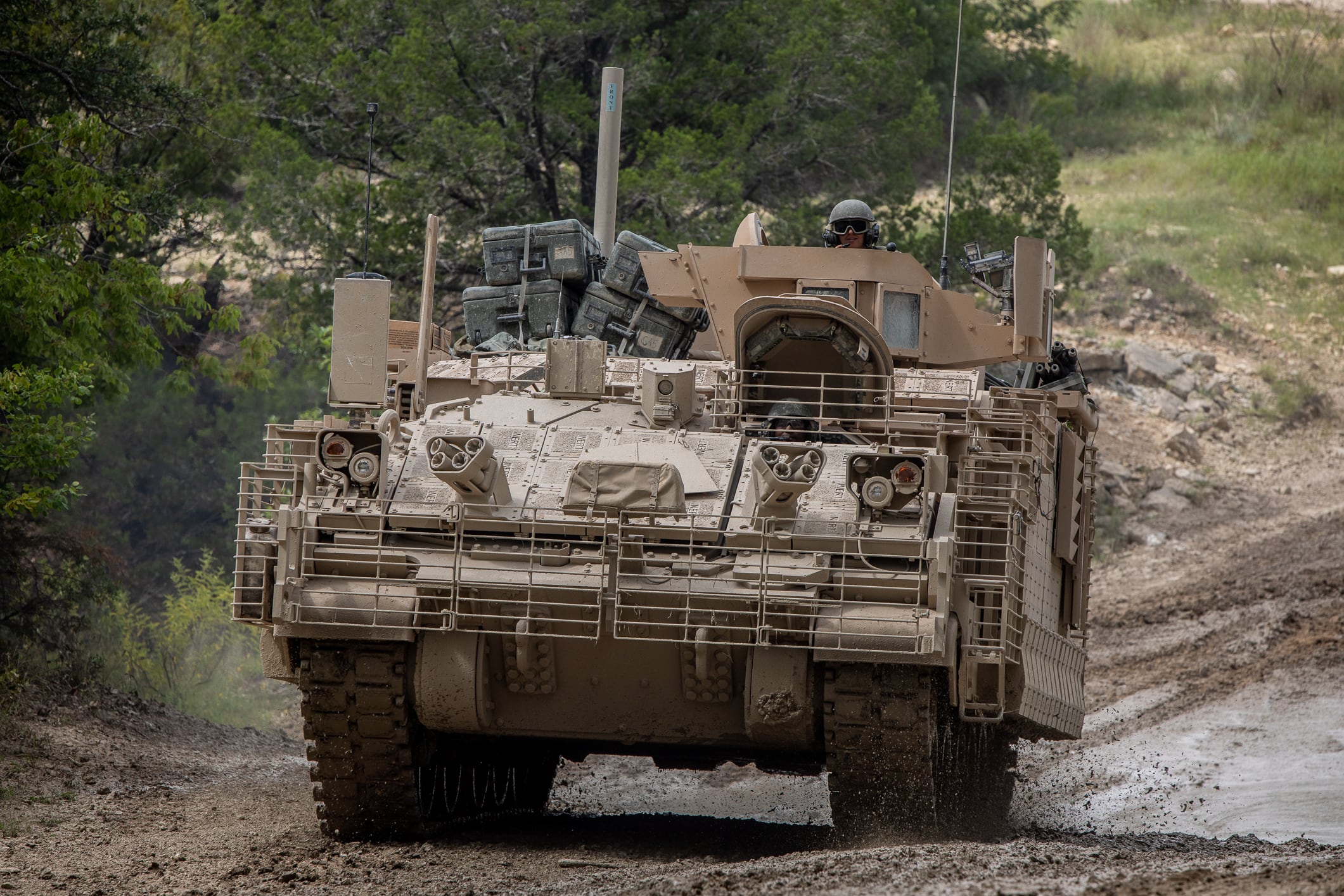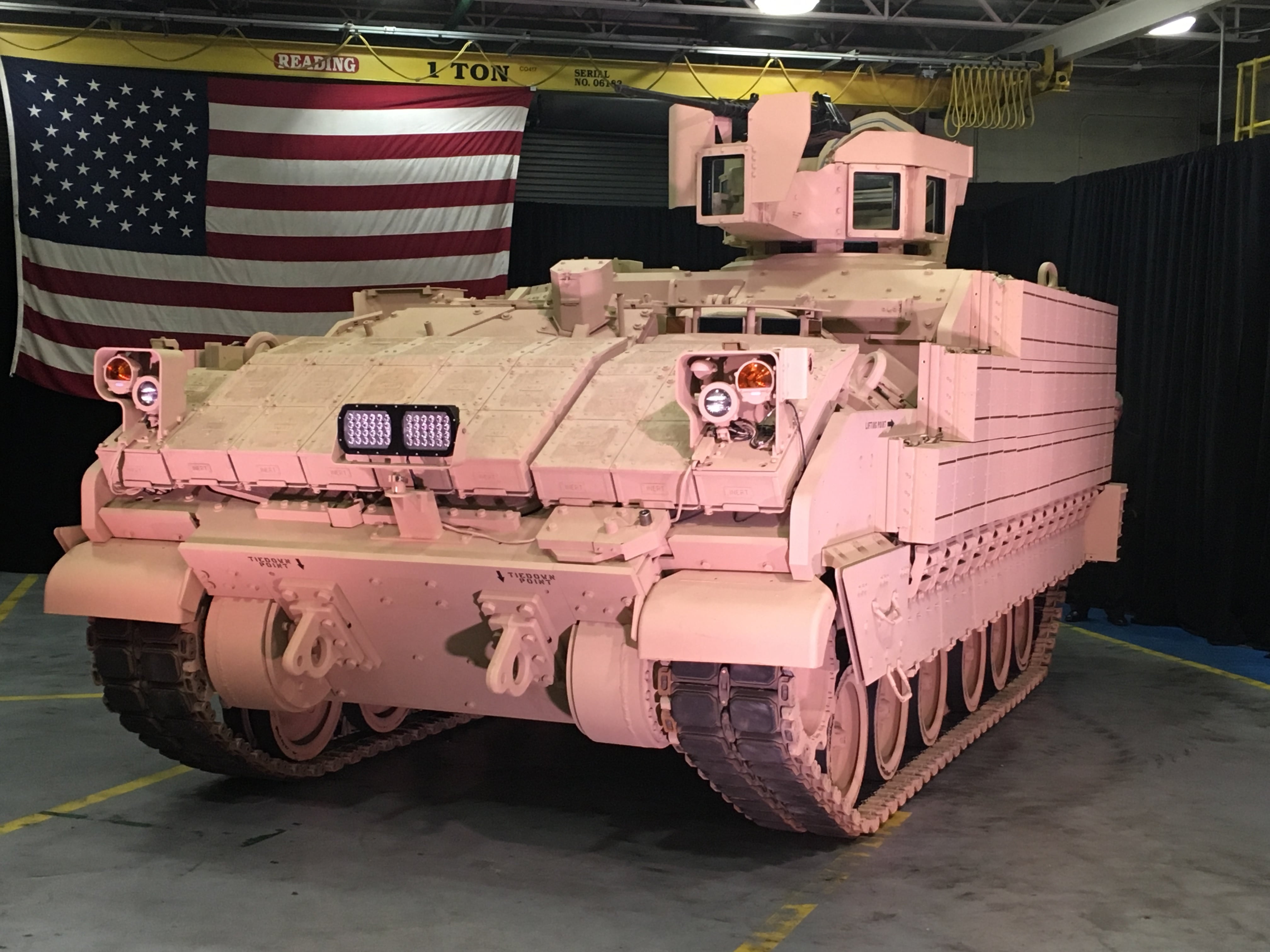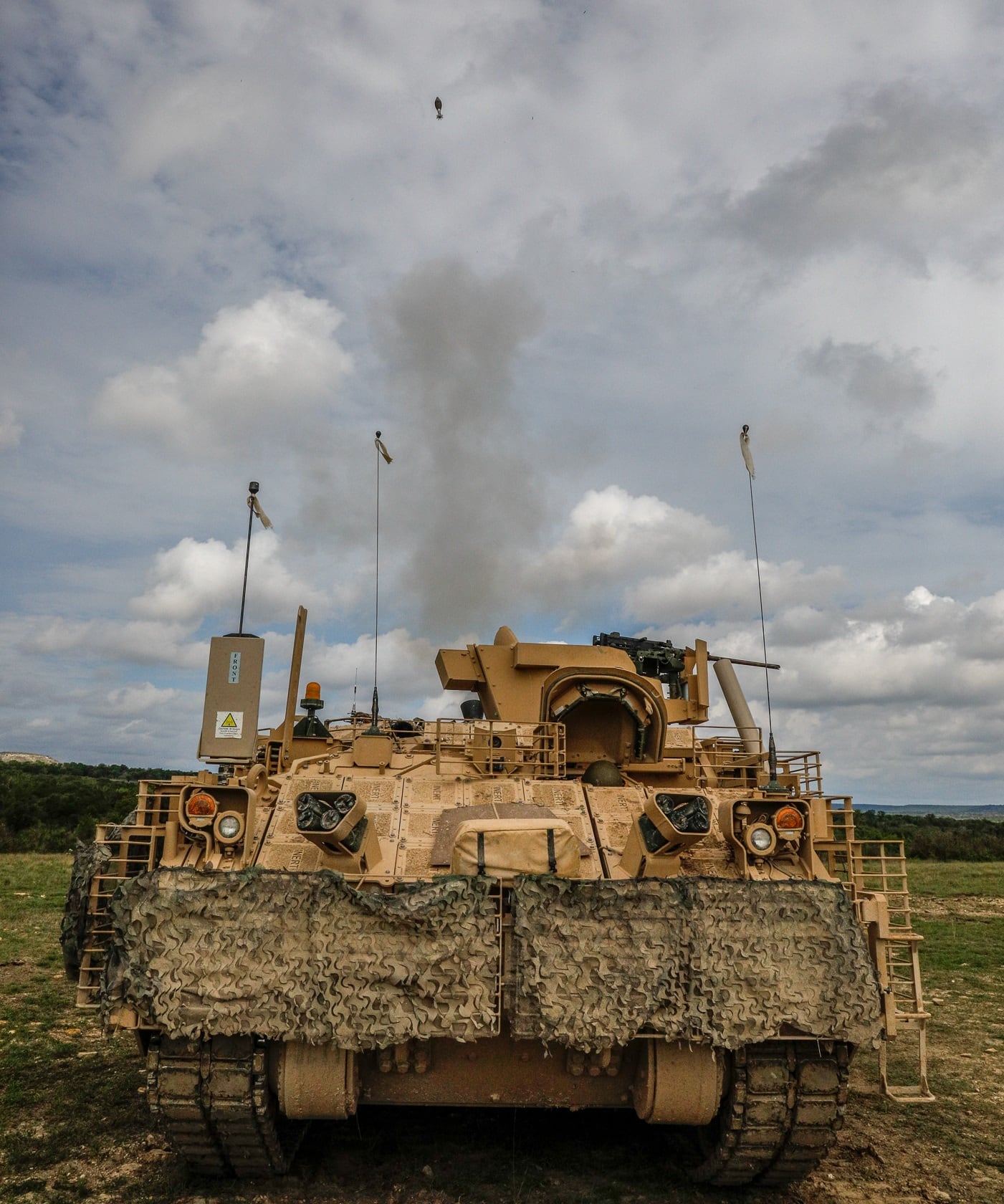The Army’s 1st Cavalry Division has just completed a two-month field test with the new Armored Multi-Purpose Vehicle at Fort Hood, Texas.
Troops from 4th Squadron, 9th Cavalry Regiment, of the division’s 2nd Armored Brigade Combat Team, worked with Army Operational Test Command — the Army’s only independent operational test organization — in field testing the new vehicles, according to a Fort Hood press release.
The AMPV variants tested were: Medical Treatment, Ambulance, General Purpose, Mortar Carriers, and Mission Command.
The Army’s primary armored fighting force — the armored brigade combat team — has been due for a vehicle upgrade for quite some time.

“The AMPV would replace 13 variants of the M113 Armored Personnel Carrier family of vehicles, which have been in service since the Vietnam-era,” the press release reads.
Army Operational Test Command collected data throughout the field training to relay back to vehicle and program designers, according to Bill McKiernan, deputy director and senior test manager, at the command’s Maneuver Test Directorate.
“We’re the link between readiness and modernization," he said. "We get the soldiers and design realistic combat scenarios in conjunction with unit and training developers to see how the system works with a real unit.”
RELATED

The cavalry troops were chosen to test the AMPV in a controlled field environment called a limited user test, which gives ground-level soldiers and their senior leaders the opportunity to provide feedback to big Army.
The extensive training program began with issuing the AMPVs to the crews, classroom instruction on its capabilities, driver training, and multiple field exercises, according to the press release.
Because different AMPV variants were available throughout the field test, soldiers from multiple military occupational specialties were able to practice battle drills while the headquarters element combined AMPVs to create a mobile mission command center.

“We get to mold the Army for the future,” said Sgt. Amanda Wilson, a combat medical specialist with 4th Squadron who participated in the exercise. “It’s giving us time to integrate the new soldiers and teach them how to set up the main aid station, forward aid station, how to receive patients and evacuate them.”
Soldiers from 1st Battalion, 5th Cavalry Regiment represented the the opposition force during the training iterations.
At the end of the field tests, soldiers participated in focus groups and completed questionnaires to aid in the assessment and improvement phase of field testing.
Kyle Rempfer was an editor and reporter who has covered combat operations, criminal cases, foreign military assistance and training accidents. Before entering journalism, Kyle served in U.S. Air Force Special Tactics and deployed in 2014 to Paktika Province, Afghanistan, and Baghdad, Iraq.




